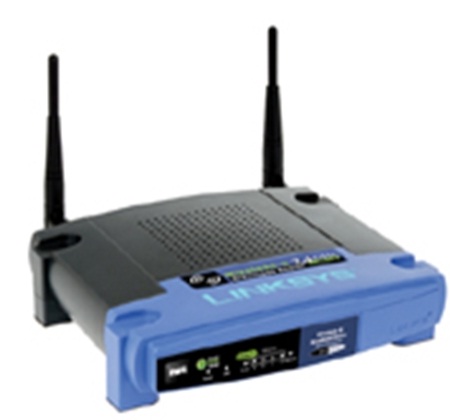It can be really handy to understand the setup when you connect wirelessly and wired through your ADSL modem router. It really is very simple, but understanding what things are and what they do can help when it comes to fault detection and getting the most out of your broadband connection.
The Wireless Router:
If you’re someone who asked “What is a wireless router?” before it arrived from the Internet service provider, then don’t worry, you’re not alone. The majority of broadband consumers don’t have a great idea about the technology that goes into broadband and how the signals are passed. So here is a brief look.
The broadband router sits between the telephone line and your devices. It is the communication tool that makes the Internet possible. It normally has several Ethernet ports on the back so that you can plug directly to devices with an Ethernet cable, and also often comes with a sticky label stuck on it or in the box with the wireless network name and the wireless access key.
Setting Up Wirelessly :
In order to get online around your home you have to have a wireless connection to the router. On your device you’ll need to search for the connection; different devices have different interfaces that enable you to do this. Often, there is an option called “Manage Connections”.
After you have found the network that corresponds with that indicated on your router, you should click on it and enter the wireless key. The wireless key is the security mechanism that stops anyone jumping on your connection and keeps it relatively secure.
The Difference between Wired and Wireless:
When you plug in through your Ethernet cable you will probably get better performance. There will be interference through the air and obstacles as you connect wirelessly, and electrical devices can even make wireless connections very unstable. If you have problems with your wireless then try raising your router to a more elevated position, ensure that it is away from electrical devices, and make sure that it is plugged in through a microfilter to the main telephone socket.
What Dictates Speed With ADSL?
The biggest determinant of the speed you’ll achieve is your distance from the telephone exchange. ADSL travels over copper cables, and therefore there is a loss of speed over distance. Where I am now, I am about 250 meters from the telephone exchange and my advertised speed is 16Mbps. In reality, plugged in through the Ethernet cable, I am able to achieve 19Mbps, because I’m so close to the exchange. My wireless connection is around 7 MBps
Top Tip:
Make sure you shop around and do a search to check what connections you can get. Many of the speed test sites collect data and provide you with a good tool to view the connectivity you’ll get through different Internet service providers.



